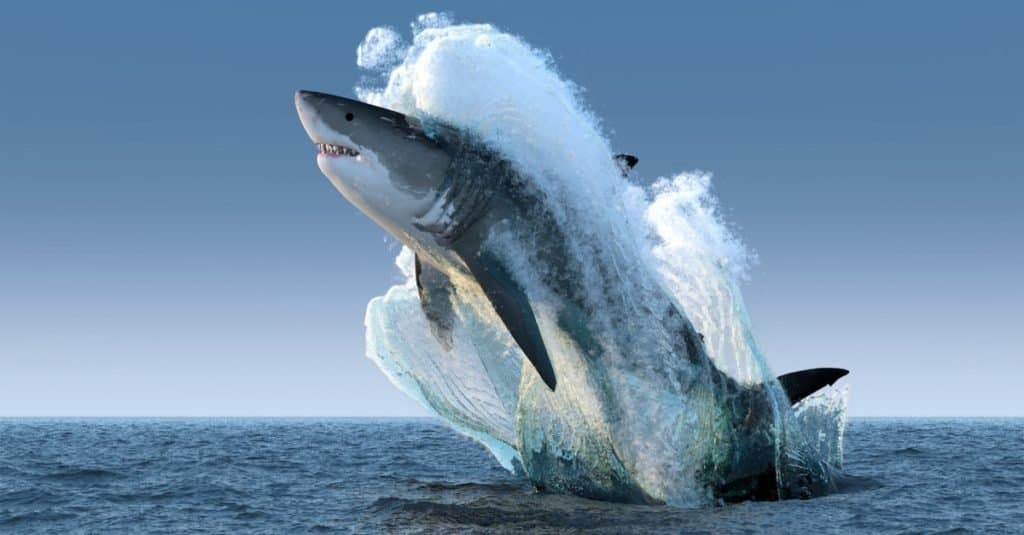Top 10 Largest Fish in the World

The largest fish in the world is the whale shark (Rhincodon typus), found in tropical oceans, and belongs to the order Orectolobiformes. It is a cartilaginous fish and holds the title for being the largest living fish species.
Imagine diving into the deep blue ocean and encountering a creature that is so massive it could engulf you in its enormous mouth. The world’s largest fish, the whale shark, is a gentle giant that roams the tropical oceans. With its sleek body and distinct pattern of spots and stripes, this incredible creature captivates the imagination of ocean lovers and scientists alike.
As the largest cartilaginous fish, the whale shark can reach lengths of up to 40 feet and weigh over 20 tons. Join us as we explore the top 10 largest fish in the world, showcasing the stunning diversity and sheer size of these magnificent marine creatures. From the massive oceanic sunfish to the elusive Greenland shark, get ready to be amazed by the wonders of the underwater world.
1. Whale Shark – The Biggest Fish In The Ocean
| 1. Whale Shark – The Biggest Fish in the Ocean |
The whale shark (Rhincodon typus) holds the title of being the biggest fish in the ocean. It belongs to the order Orectolobiformes and can be found in the tropical oceans around the world. The whale shark is also the largest living cartilaginous fish. This majestic creature is known for its physical characteristics, including its enormous size and distinctive pattern of white spots on its dark grayish-blue or brownish-gray skin.
The whale shark can reach lengths of up to 40 feet or more, making it one of the largest fish species in the world. Its habitat includes warm waters and it can be found in areas such as the Indian Ocean, the Pacific Ocean, and the Atlantic Ocean. It is a migratory species and is known to travel long distances in search of food and suitable breeding grounds.
When it comes to diet, the whale shark is a filter feeder, meaning it primarily feeds on plankton and small fish. It has a large mouth that can open wide to ingest large amounts of water, which it filters through its gills to extract the tiny organisms that make up its diet. This feeding habit also makes the whale shark an important species for maintaining the balance of marine ecosystems.
Despite its massive size, the conservation status of the whale shark is currently classified as vulnerable. The species faces threats such as overfishing, habitat loss, and accidental bycatch. Efforts are being made to protect and conserve this magnificent creature through initiatives such as marine protected areas and responsible tourism practices.
2. Basking Shark – The Second Largest Fish In The World
|
2. Basking Shark – The Second Largest Fish in the World
The basking shark (Cetorhinus maximus) is the second largest fish in the world, following the whale shark. It is a member of the order Lamniformes and can be found in temperate waters across the globe. Here are some key details about this fascinating creature: Overview Of The Basking Shark
|
3. Great White Shark – The Third Largest Fish In The World
The Great White Shark, ranking as the third largest fish in the world, is an iconic predator known for its sheer size and power. With its distinctive appearance and impressive anatomy, this apex predator remains a subject of awe and fascination for many.
| Introduction to the great white shark |
|---|
| The great white shark (Carcharodon carcharias) is an impressive marine predator known for its large size and powerful hunting abilities. As the third largest fish in the world, it can reach lengths of up to 20 feet and weigh over 4,000 pounds. |
| Size and anatomy |
|---|
| The great white shark possesses a streamlined body and a distinct dorsal fin, which allows it to swim efficiently through the water. Its powerful jaws contain rows of sharp, serrated teeth used for tearing apart its prey. The average adult great white shark measures around 15 feet in length, but individual specimens can exceed this size. |
| Hunting behavior and diet |
|---|
| The great white shark is an apex predator and is known for its predatory behavior. It primarily feeds on marine mammals such as seals and sea lions, as well as smaller fish, rays, and occasionally even other sharks. Its hunting technique involves stalking its prey stealthily before launching a swift and powerful attack. |
| Interaction with humans |
|---|
| While the great white shark is often portrayed as a fearsome predator, fatal interactions between humans and these sharks are extremely rare. In fact, most incidents involving humans are cases of mistaken identity, where the shark releases its grip after realizing humans are not their preferred prey. Nonetheless, precautionary measures, such as avoiding areas with known great white shark activity, are recommended. |
| Conservation status |
|---|
| The great white shark is classified as a vulnerable species by the International Union for Conservation of Nature (IUCN). Due to factors such as overfishing, bycatch, and habitat degradation, their populations have been declining. Protected by several international agreements and regulations, efforts are being made to conserve and protect these majestic creatures. |
4. Giant Manta Ray – One Of The Largest Fish In The World
The Giant Manta Ray is one of the largest fish in the world, belonging to the order Mobulidae. It is a magnificent creature found in tropical oceans and can reach impressive sizes.
| Overview of the manta ray |
| Manta rays are one of the largest fish species in the world. They belong to the order Orectolobiformes and are found in the tropical oceans. While they are often mistaken for a type of shark, they are actually cartilaginous fish. Manta rays are known for their impressive size, with some individuals having a wingspan of up to 29 feet and weighing several tons. They have a unique appearance, with a flat disc-shaped body and wide, triangular pectoral fins. These magnificent creatures exhibit a graceful swimming motion as they glide through the water. Manta rays are filter feeders and primarily eat plankton. They are also known for their impressive migratory patterns, traveling long distances in search of food and suitable breeding grounds. Unfortunately, manta rays are facing various threats, such as overfishing and habitat destruction. Conservation measures are being implemented to protect these incredible creatures and ensure their survival for future generations. |
| Size and physical characteristics |
| Manta rays are known for their large size, with some individuals reaching a wingspan of up to 29 feet. Their bodies are flattened and disc-shaped, with broad pectoral fins that they use for navigation and feeding. These fins, which resemble wings, give them an elegant and graceful appearance as they glide through the water. Manta rays have smooth skin, usually in shades of dark brown or black, that is covered in small denticles. These denticles help to reduce drag in the water and provide protection against parasites. In addition to their size, manta rays are also notable for their weight, with some individuals weighing several tons. Despite their impressive physical characteristics, manta rays are known for their gentle nature and pose no threat to humans. |
| Feeding and migration patterns |
| Manta rays are filter feeders, which means that they primarily eat plankton and other small organisms. They have a unique feeding strategy, swimming with their mouths wide open to capture their prey as they move through the water. Manta rays also have specialized gill rakers that help them filter out the small organisms from the water. They are known to feed in areas where upwelling occurs, as this brings a abundance of plankton and other food sources to the surface. In terms of migration patterns, manta rays are highly migratory creatures. They are known to travel long distances in search of food and suitable breeding grounds. Some individuals have been observed moving between different oceanic regions, covering thousands of miles during their migrations. |
| Threats and conservation measures |
| Unfortunately, manta rays are facing numerous threats to their survival. Overfishing poses a significant risk to their populations, as they are targeted for their meat, gill plates, and fins, which are considered valuable in certain markets. Habitat destruction, such as coastal development and pollution, also poses a threat to their natural habitats. Climate change is another concern, as it can alter the oceanic conditions and impact the availability of food sources for manta rays. To protect these magnificent creatures, various conservation measures have been implemented. These include the establishment of marine protected areas, regulating fishing practices, and raising awareness about the importance of manta ray conservation. These efforts aim to ensure the long-term survival of manta rays and maintain the balance of marine ecosystems. |
5. Ocean Sunfish – The World’s Heaviest Bony Fish
Ocean Sunfish, also known as Mola Mola, holds the title of the world’s heaviest bony fish. With an average weight of 2,200 pounds, it is an impressive giant of the seas.
|
Introduction to the Ocean Sunfish The Ocean Sunfish, also known as Mola mola, is the heaviest bony fish in the world. It can be found in tropical and temperate oceans, and its unique appearance makes it easily recognizable. Size and Weight The Ocean Sunfish can reach an impressive size, with an average length of 6.6 feet and a weight of 2,200 pounds. However, they have been known to grow even larger, with some individuals measuring up to 10.8 feet in length. Feeding Habits and Diet Despite its massive size, the Ocean Sunfish primarily feeds on small organisms such as jellyfish, salps, and other soft-bodied animals. They consume large quantities of food due to their high metabolic rate. Reproduction and Life Cycle Little is known about the reproductive habits of Ocean Sunfish, but they are believed to produce very large numbers of eggs. The larvae go through several stages of development before eventually transforming into adults. Conservation Status The Ocean Sunfish is listed as vulnerable by the International Union for Conservation of Nature (IUCN) due to threats such as fisheries bycatch, marine pollution, and habitat destruction. |
6. Arapaima – One Of The Largest Edible Fishes In The World
The Arapaima is one of the largest edible fishes in the world and is featured in the Top 10 Largest Fish in the World.
| Overview of the arapaima |
|---|
| The arapaima is one of the largest edible fishes in the world, known for its impressive size and weight. It can grow up to 10 feet in length and weigh over 400 pounds. This fish is native to the Amazon Basin in South America, where it inhabits rivers, lakes, and flooded forests. Arapaimas are air breathers and have the ability to gulp air from the surface, which allows them to survive in low-oxygen environments. They are mainly found in Brazil, Peru, and Guyana. Due to its size and rich flavor, the arapaima has significant importance in local cuisine. This fish is a delicacy and is often used in traditional dishes. However, overfishing and habitat destruction have led to concerns about the conservation of arapaima populations. Efforts are being made to protect and sustainably manage these fish, including the establishment of protected areas and fishing regulations. In conclusion, the arapaima is an impressive fish not only for its size but also for its cultural and ecological importance. Conservation efforts are crucial to ensure the survival of this remarkable species and its role in the local ecosystems. |
7. Beluga Sturgeon – Largest Bony Fish Found In Freshwater
The Beluga Sturgeon is the largest bony fish found in freshwater, making it one of the top 10 largest fish in the world. With its impressive size, it is a remarkable species that captures the awe of any marine enthusiast.
| Beluga Sturgeon – Largest Bony Fish Found in Freshwater | |
| Introduction to the beluga sturgeon | |
| Size and physical attributes | |
| The beluga sturgeon (Huso huso) is an ancient and incredibly large bony fish found in freshwater systems. It holds the honor of being the largest bony fish in the world, capable of reaching lengths of up to 23 feet and weighing over 2 tons. With its elongated body and retained bony skeleton, the beluga sturgeon is an impressive specimen to behold. | |
| Habitat and range | |
| Beluga sturgeons are native to the Caspian Sea and Black Sea basins, but they can also be found in various rivers that flow into these seas. They prefer deep waters and often migrate to spawn in their natal rivers. Unfortunately, their range has significantly declined due to overfishing and habitat destruction. | |
| Threats and conservation initiatives | |
| The beluga sturgeon population has been severely impacted by overfishing, primarily driven by the demand for its valuable caviar. Additionally, habitat degradation and pollution have further pushed the species towards decline. To mitigate these threats, various conservation initiatives have been implemented, including fishing quotas, habitat restoration, and international agreements to protect the species. | |
8. Blue Marlin – One Of The Largest Fishes Caught By Sports Anglers
Blue Marlin is one of the largest fishes caught by sports anglers. With its impressive size and strength, it makes for an exhilarating catch for fishing enthusiasts. Explore the world of the top 10 largest fish and discover the wonders of the underwater realm.
| Blue Marlin – One of the Largest Fishes Caught by Sports Anglers |
|---|
|
9. Greenland Shark – One Of The Longest-lived Fish Species
The Greenland Shark, known for its long lifespan, is one of the largest and most intriguing fish species in the world. With a unique ability to live for hundreds of years, it stands out among the top 10 largest fish in the world.
| Introduction to the Greenland Shark |
| Size and Longevity |
| The Greenland shark is known as one of the largest fish species in the world, reaching an average length of 6-7 meters. It is also one of the longest-living fish species, with individuals exceeding 400 years of age. Its slow growth rate and low metabolic rate contribute to its exceptional longevity. |
| Feeding Habits and Diet |
| Greenland sharks are opportunistic predators, often scavenging on carrion or preying on seals, fish, and even smaller sharks. They have been known to consume a wide range of prey, including polar bears found in their stomachs. Their sluggish nature and slow digestion make them rely on easy food sources. |
| Reproduction and Lifespan |
| These remarkable creatures reach sexual maturity at a late age, around 150 years. As slow reproducers, females only give birth once every 3-4 years, usually to a litter of 10-12 pups. The long lifespan of Greenland sharks contributes to their significant contribution to the ecosystem. |
| Challenges in Studying and Conserving This Species |
| Due to their deep-sea habitats, Greenland sharks are challenging to study. Their slow growth rate, late sexual maturity, and low reproductive rate make them prone to overfishing and vulnerable to environmental changes. Understanding their behavior and populations is crucial for effective conservation measures. |
10. African Tigerfish – One Of The Largest Freshwater Predatory Fish
The African Tigerfish is one of the largest freshwater predatory fish, making it one of the top 10 largest fish in the world. With its impressive size and hunting abilities, it is a fascinating species to learn about.
| African Tigerfish – One of the Largest Freshwater Predatory Fish |
| The African tigerfish, scientifically known as Hydrocynus vittatus, is one of the largest freshwater predatory fish in the world. It has a streamlined body with sharp teeth, making it an efficient hunter. Growing up to 1 meter in length and weighing around 15 kilograms, the African tigerfish is quite impressive in size. It is known for its silver coloration and striking red fins. |
| Overview of the African tigerfish |
| The African tigerfish is known for its aggressive nature and is a fierce predator. It hunts using its sharp teeth to impale its prey, often leaping out of the water to catch birds in mid-air. This species is mainly found in the rivers and lakes of sub-Saharan Africa. It prefers areas with dense vegetation and large open spaces for hunting. However, due to habitat loss and overfishing, the African tigerfish is now considered near threatened according to the IUCN Red List. Conservation efforts are crucial to ensure the long-term survival of this impressive species. |

Credit: a-z-animals.com
Conclusion
The world is home to a fascinating array of large fish species. From the extraordinary whale shark, which holds the title for being the largest living cartilaginous fish, to other incredible bony fish such as the Mola mola and the white sturgeon, these creatures never fail to astound us with their sheer size.
Whether you’re a marine biology enthusiast or simply curious about the wonders of the ocean, exploring the world of these majestic giants is truly awe-inspiring.





